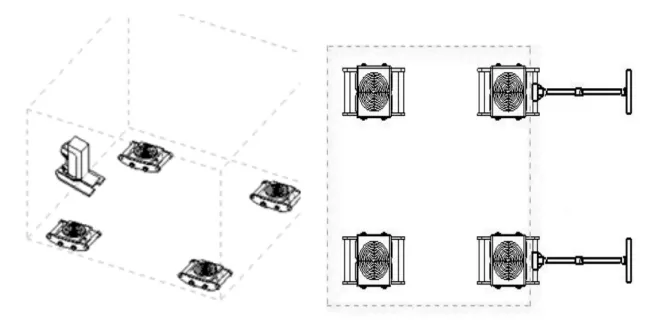Exploring Innovative Techniques in Workshop Gantry Design and Implementation
Exploring the Future of Automation with Workshop Gantry Systems
In the realm of modern manufacturing and industrial processes, the efficiency and effectiveness of operations are paramount. One of the innovative solutions that have emerged to enhance productivity is the workshop gantry system. This sophisticated piece of equipment represents a significant advancement in the automation of material handling and assembly work, ensuring that industries can meet the growing demands for speed and precision.
A workshop gantry system is essentially a framework that allows for the movement of tools, components, or finished products in a designated workspace. It comprises a gantry frame, which supports a hoist or a traversing mechanism capable of moving loads vertically and horizontally. This structure can be fixed or mobile, offering great flexibility depending on the workspace requirements. With capacities ranging from light to heavy loads, these systems are versatile enough to accommodate various applications across industries, including automotive, aerospace, and construction.
One of the most significant advantages of workshop gantry systems is their ability to increase efficiency. By automating the lifting and transporting of materials, these systems minimize manual labor and reduce the risk of workplace injuries. Workers can instead focus on more skilled tasks, thus enhancing overall productivity. Furthermore, gantry systems can be programmed for precision, ensuring that heavy components are lifted and moved with accuracy, thereby decreasing the likelihood of errors and damage.
Cost savings are another crucial benefit associated with the implementation of workshop gantry systems
. Although the initial investment may be substantial, the long-term savings obtained through increased operational efficiency, reduced labor costs, and fewer workplace accidents can provide a quick return on investment. Moreover, by improving throughput and ensuring that manufacturing processes run smoothly, businesses can increase their output without the necessity of additional manpower or resources.workshop gantry

In addition to efficiency and cost-effectiveness, workshop gantry systems offer significant customization options. Manufacturers can tailor these systems to fit specific operational needs, including adjusting the height, load capacity, and type of lifting mechanisms. This flexibility allows companies to configure their production lines in a way that suits their unique industrial processes, thereby maximizing the utility of the workspace.
The integration of advanced technologies, such as IoT and AI, into workshop gantry systems is further transforming the landscape of automation. Connected gantry systems can monitor performance metrics in real-time, providing critical data that can drive predictive maintenance, enhance safety protocols, and streamline operations. This move toward smart automation allows businesses to stay ahead in a rapidly changing industrial environment.
Despite the many advantages, it is essential to acknowledge that the integration of workshop gantry systems requires proper training and adherence to safety regulations. Operators must be well-versed in the functionalities of the gantry systems to minimize potential hazards. Additionally, regular maintenance checks should be conducted to ensure that the equipment remains in optimal working condition, further enhancing safety and reliability.
In conclusion, workshop gantry systems represent a significant leap forward in the automation of industrial processes. By enhancing efficiency, reducing costs, and providing customizable solutions, these systems are invaluable in meeting the demands of modern manufacturing. As industries continue to evolve, the incorporation of smart technologies into gantry systems will likely drive further innovations, making the future of automation brighter than ever. The journey towards fully automated workshops is underway, and the workshop gantry is undoubtedly a critical player in this transformative process.
-
the-power-of-trolley-cargo-and-machinery-moving-solutionsNewsAug.22,2025
-
exploring-magnetic-lifting-devices-for-efficient-steel-plate-handlingNewsAug.22,2025
-
the-essential-guide-toportal-craneNewsAug.22,2025
-
enhancing-efficiency-in-permanent-magnetic-liftersNewsAug.22,2025
-
heavy-duty-machinery-movers-and-material-handling-solutionsNewsAug.22,2025
-
the-comprehensive-guide-to-adjustable-gantry-cranesNewsAug.22,2025
-
The Ultimate Guide to Heavy Machinery Moving EquipmentNewsAug.04,2025
